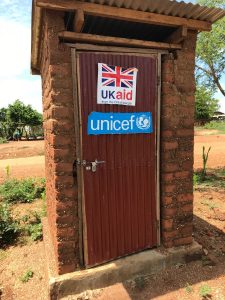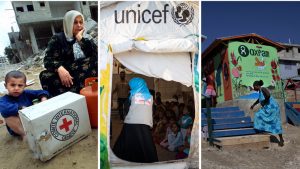Illegal immigration to the US a humanitarian problem
Journalists have recently uncovered reports from a February 2017 Department of Homeland Security meeting in which Trump immigration officials argued that immediate prosecution for illegal crossings, which would separate parents from their children, would deter illegal immigration. In fact, CNN reports data from the U.S. Customs and Border Protection agency showing that the number of illegal border crossings has actually increased since the prosecution initiative was announced.
This failure to deter illegal immigration is understandable given what we know about the circumstances. Many are fleeing Central American countries, including Guatemala, Honduras and El Salvador, where gang violence, crime, drug cartels and poverty leave them with little hope for a future. Parents fear their children will be forced into gangs or killed if they stay.
In fact, the number of children who come unaccompanied to the United States has increased recently, with most growth coming from Hondurus, where gang violence and homicide is the worst. It is clear that parents are willing to be separated from their children in order to give them the chance to escape. This isn’t a new phenomenon. In the 17th and 18th centuries, European families sent their children on dangerous journeys to America as unaccompanied minors and even as indentured servants in order to give them opportunities for a better life.
In light of the circumstances, it is difficult to imagine the amount of depraved cruelty our immigration process would have to inflict upon asylum-seekers in order to make staying home the more attractive option.
If legal immigration were a more legitimate option, more people would be compelled to follow the process. As it is, we have made it more and more difficult for people to seek asylum and the approval rate is notoriously low.
[Excerpts of LancasterOnline article by April Kelly-Woessner, political science professor at Elizabethtown College]

 Ian Birrell, an international reporter and a contributing editor to Great Britain’s The Mail on Sunday, tweeted an image of a corrugated latrine door from a trip to the Bidi Bidi refugee camp in Uganda in May. Birrell wrote, “So demeaning for those who fled chaos and carnage to be endlessly reminded of their supplicant status.”
Ian Birrell, an international reporter and a contributing editor to Great Britain’s The Mail on Sunday, tweeted an image of a corrugated latrine door from a trip to the Bidi Bidi refugee camp in Uganda in May. Birrell wrote, “So demeaning for those who fled chaos and carnage to be endlessly reminded of their supplicant status.” Such logos also help ensure that charities and donors get credit for their good deeds. According to USAID’s branding guide, their red, white and blue logo “was developed to ensure that the American people are visibly acknowledged for their contributions.”
Such logos also help ensure that charities and donors get credit for their good deeds. According to USAID’s branding guide, their red, white and blue logo “was developed to ensure that the American people are visibly acknowledged for their contributions.”